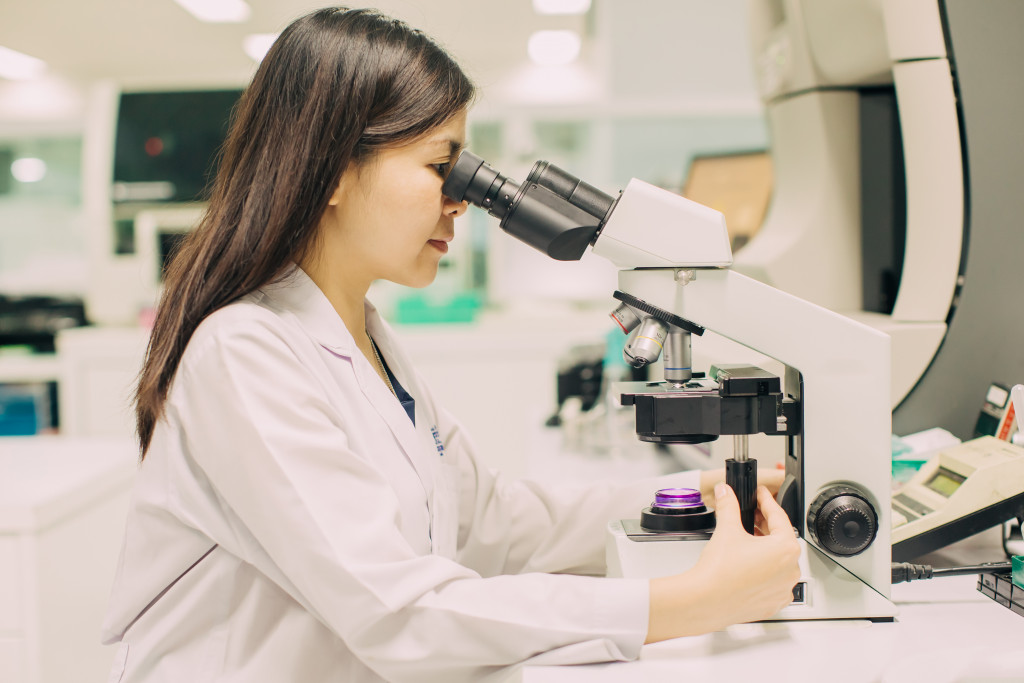Advances in technology are having a rapid impact on all aspects of business operations, including workplace safety. In fact, investing in workplace safety technologies can be advantageous for any company.
If you work in organizations with hazardous operations, especially industrial and academic laboratories, you and the company you work for can benefit the most from these technologies. In fact, according to the Laboratory Safety Institute (LSI), 25-38% of personnel have had an accident or injury in a lab on a regular basis. Unfortunately, most of these incidences are not even reported to company management.
Advances in communications, data analytics, robotics, and other technologies can allow your organization to improve the safety of laboratory technicians and other workers in numerous ways. These technologies help keep your employees away from danger, reduce their physical stress, monitor their health, boost morale, and increase retention.
This article will focus on the technologies that can be used and applied in a laboratory setting to improve worker safety. Some of these technologies have been used for years, but recent innovations have increased their effectiveness. Others on the other hand, while not relatively new, are now proving useful in laboratories. Find out more about them below.
Smart PPE
Personal protective equipment (PPE) has come a long way from being just worn in a laboratory to wearable technology today that can monitor and warn workers of danger. They are continuously evolving.
You can see many PPE today, more referred to as smart PPE, help prevent accidents in your lab, increase productivity and reduce hospitalization costs. Because of their benefits, you can convince more personnel to wear them, which is can be a significant improvement. According to LSI, only 40% of lab personnel wear PPE at all times.
To collect data and report safety information in real-time, smart PPE are connected to the internet. They send notifications that help both lab personnel and managers to adjust internal and external conditions to ensure the surrounding environment is safe to work in. You can also see smart PPE notify lab managers when a person has been involved in an accident or has suffered an injury.
Most smart PPE today comes in various forms. There are environmental sensor clothing that can detect chemicals, gasses, and heat. Some light-emitting clothing, on the other hand, helps increase visibility, which is helpful when your lab workers need to accomplish fieldwork.
Other widely used smart PPE include smart helmets, smart glasses, fatigue monitors, location devices, and temperature monitoring clothing.
Office Environments
As a lab personnel, you often spend long hours at work. Thankfully, there are significant advancements in office chairs and workstations. You can use adjustable and standing workstations. You can also use ergonomic keyboards, mouse, and chairs.
Innovations in workplace safety are also gradually being introduced in office environments. Fire safety facilities such as elevator smoke curtains and air sampling technology should be present in your laboratory. Mass notification and evacuation systems should be upgraded as well.

Virtual Reality and 3D Visualization
You can help give lab personnel an idea of their work environment using virtual reality (VR) and 3D visualization. Through these technologies, you can digitally recreate lifelike images of their worksites, both in laboratories and fieldwork. This way, lab personnel and managers know what to expect before their start their work. Knowing what to expect can help workers adjust and prepare for safety.
With VR technology, you can test worksite concepts that can help design a safe work environment. More importantly, it can help you explore dangerous worksites without actually being physicall present in that environment. All of this can allow your organization to reduce hazards in the laboratory.
Drones and Robots
If you have lifting and other repetitive tasks in your laboratory, you should take advantage of highly mobile drone technology and robotics. They are also useful in fieldwork activities such as inspecting worksites, monitoring operations, accessing hazardous locations, and collecting samples.
Artificial Intelligence
When artificial intelligence (AI) is mentioned, you may think about destructive robots’ features in movies. That’s not the case at all. To use artificial intelligence in your laboratory, you simply have to use business applications available today.
Employee management, enterprise resource planning, health and safety, and human resources systems are great software to start with, according to the Industrial Safety and Hygiene News magazine. These apps are embedded with AI that helps analyze data to come up with workplace safety solutions. Solutions are then suggested to managers. It’s up to the managers whether to implement those suggestions or not.
Workplace Safety Equates to Satisfied Employees
All organizations are required to ensure the health and safety of their employees. It’s great that the world has new technologies to help companies achieve this goal. This means that if you have these technologies, your lab personnel and managers can become more productive and satisfied.
